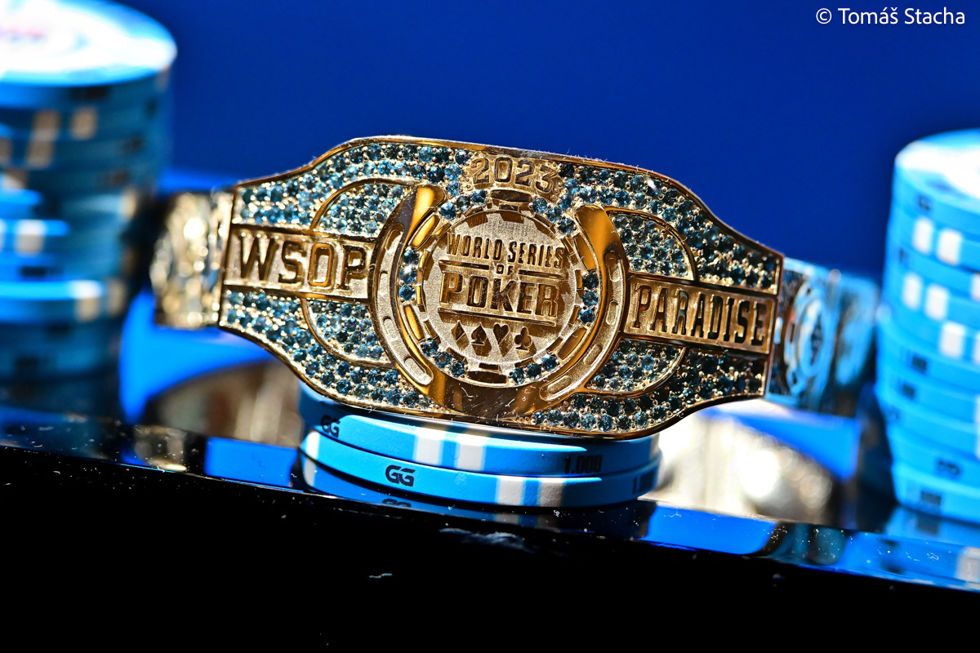Buy-in poker cash games are a popular format of poker where players purchase chips up to a specified maximum amount and can join or leave the game at any time. Unlike tournaments, cash games allow for more flexible play, with stakes that can range from micro-limits to high-stakes games attracting professional players. The buy-in amount typically dictates the stakes of the game, influencing both the level of competition and the strategies employed by players. In these games, the chips represent real money, and the goal is to win as much as possible, adjusting tactics based on the varying stack sizes and playing styles of opponents. Mastery of cash game poker requires a deep understanding of game theory, psychology, and risk management, as players navigate the complexities of each hand to maximize their profit over the long term.
Mastering Buy-In Poker Cash Game: Essential Tips for Success
Buy-In Poker Cash Game: Navigating the Stakes and Strategies
Mastering the art of buy-in poker cash games is akin to navigating a complex labyrinth of strategy, psychology, and mathematics. The allure of the felt is undeniable, and for those who approach the game with a blend of respect and savvy, the rewards can be substantial. Whether you’re a seasoned card shark or a newcomer to the clatter of chips, understanding the nuances of buy-in levels and the strategies that accompany them is paramount to your success at the tables.
First and foremost, it’s essential to recognize that the stakes you play will significantly influence the dynamics of the game. Lower stakes games often feature a more relaxed atmosphere, with players willing to take risks for the thrill rather than the financial gain. Conversely, higher stakes demand a more serious demeanor, as the players you’ll encounter are likely to be more experienced and strategic in their play. It’s crucial, then, to choose a level that not only matches your skill set but also aligns with your comfort when it comes to potential losses.
Once you’ve settled on the appropriate stakes, it’s time to delve into the strategies that will help you thrive. A key aspect of cash game poker is the ability to adapt. Unlike tournaments, where the escalating blinds force action, cash games allow for a more patient approach. This means you have the luxury of waiting for premium hands and favorable situations. However, don’t mistake this patience for passivity. Aggression, when timed correctly, is a potent tool. By selectively applying pressure on your opponents, you can accumulate chips without the need for showdowns.
Another critical component of cash game success is bankroll management. It’s tempting to sit down with your entire bankroll at the table, but this is a recipe for disaster. A common guideline is to never buy in for more than 5% of your total bankroll, thus ensuring that you can weather the inevitable swings of the game. This disciplined approach not only safeguards your finances but also keeps your emotions in check, allowing you to make rational decisions rather than ones fueled by the fear of going broke.
Furthermore, it’s imperative to develop a keen sense of observation. Pay close attention to your opponents’ betting patterns, their tells, and how they react to different situations. This information is invaluable and can provide you with insights into their hand strength and psychological state. Armed with this knowledge, you can exploit their weaknesses and avoid walking into traps.
Lastly, remember that poker is a game of incomplete information. Embrace the uncertainty and focus on making the best decisions possible with the information at hand. Sometimes, this means folding what you believe to be the best hand; other times, it means pushing all your chips to the center with nothing but sheer conviction. The beauty of cash games lies in the myriad of decisions that each hand presents, and your ability to navigate these choices will ultimately determine your success.
In conclusion, buy-in poker cash games offer a thrilling and potentially lucrative experience for those who approach them with the right mindset and strategies. Choose your stakes wisely, manage your bankroll with care, and remain observant and adaptable at the tables. With these essential tips in your arsenal, you’ll be well on your way to mastering the ebb and flow of cash game poker. Remember, every session is an opportunity to learn and improve, so embrace the challenge and enjoy the journey to becoming a formidable presence at the felt.
Buy-In Poker Cash Game Strategies: How to Maximize Your Winnings
Buy-In Poker Cash Game: Navigating the Stakes and Strategies
Poker is not just a game of chance; it’s a symphony of skill, strategy, and psychological warfare. When you sit down at a cash game table, the buy-in you choose is your first critical decision, one that sets the tone for your entire session. It’s essential to approach this decision with a clear mind and a solid strategy to maximize your winnings and enjoy the game to its fullest.
Firstly, consider your bankroll. It’s the foundation upon which your poker empire is built. A common guideline is to have at least 20-30 buy-ins for the level at which you’re playing. This buffer allows you to withstand the natural variance of the game without the risk of going broke. If you’re playing a $1/$2 No-Limit Hold’em game with a typical buy-in of $200, ensure you have at least $4,000 to $6,000 in your bankroll. This level of preparation empowers you to play your best game without the fear of losing your entire stake in one unlucky hand.
Once you’ve determined the appropriate stakes for your bankroll, it’s time to focus on the game itself. The beauty of cash games lies in their flexibility. Unlike tournaments, you can choose when to walk away, which means you should always be playing in peak mental condition. If you’re feeling fatigued or tilted, it’s time to cash out and come back another day. Remember, poker is a marathon, not a sprint, and the most successful players are those who know when to take a break.
Now, let’s talk about table selection. It’s an often-overlooked aspect of cash game strategy, but it can significantly impact your bottom line. Look for tables with a mix of skill levels, and try to position yourself to the left of aggressive or less skilled players. This strategic seat gives you the advantage of acting after them, allowing you to exploit their tendencies and mistakes. Don’t be afraid to change tables if the dynamics aren’t in your favor. Your goal is to find the most profitable situation, not to prove yourself against the best players in the room.
As you settle into the game, pay close attention to your opponents’ playing styles. Are they tight or loose? Passive or aggressive? Adjusting your strategy to exploit these tendencies is key. For instance, against tight players, you can often steal blinds and take control of pots with well-timed aggression. Against loose players, tighten up and wait for strong hands to extract maximum value.
Another crucial aspect of cash game strategy is bankroll management. Even if you’re winning, it’s important to set limits for yourself. Decide on a maximum win or loss limit for the session. This discipline prevents you from giving back your winnings in a moment of overconfidence or chasing losses when luck isn’t on your side.
In conclusion, a successful buy-in poker cash game strategy is a blend of bankroll management, psychological insight, and tactical prowess. By carefully selecting your stakes, managing your mental state, choosing the right table, and adapting to your opponents’ styles, you can maximize your winnings and enjoy the rich tapestry of challenges that poker presents. Remember, every hand is an opportunity to learn and improve. With patience, observation, and a bit of daring, the poker table can be a place of both profit and pleasure.
The Psychology of Buy-In Poker Cash Games: Understanding Opponent Dynamics
Buy-In Poker Cash Game: Navigating the Stakes and Strategies
Poker, a game of skill, strategy, and psychological warfare, has long captivated the minds of players around the globe. The allure of the felt, the clink of chips, and the thrill of a well-played hand are undeniable. But beyond the mechanics of the game lies a deeper, more nuanced battleground—the psychology of buy-in poker cash games. Understanding opponent dynamics is not just an advantage; it’s a necessity for anyone looking to navigate the stakes and emerge victorious.
Firstly, let’s consider the significance of the buy-in itself. The amount of money a player is willing to invest speaks volumes about their style and confidence. A larger buy-in can intimidate opponents, suggesting a player with both the bankroll and the bravado to back up their bets. Conversely, a smaller buy-in might indicate a more cautious or inexperienced player. However, astute players know that appearances can be deceiving, and they use this knowledge to their advantage, often employing a strategy of misdirection.
Moreover, the size of the buy-in relative to the table stakes sets the stage for the game’s dynamics. A player buying in for the maximum allowed often signals a readiness to play a deep-stacked game, where the potential for post-flop play and skillful maneuvering is heightened. On the other hand, a minimum or short buy-in might suggest a strategy of playing a tighter range of hands, looking for opportunities to go all-in and double up.
As the game unfolds, observing how opponents manage their stacks becomes crucial. Players who protect their chips too fiercely may betray a fear of losing, which can be exploited by applying pressure in the right moments. Conversely, those who splash chips around too liberally can be baited into over-committing on marginal hands. The key is to adapt your play to exploit these tendencies without becoming predictable yourself.
Equally important is the ability to read the table’s mood and adjust accordingly. A table that’s laughing and conversational is likely to play looser, with players taking more risks. In such an environment, tightening up and waiting for premium hands can pay dividends. In contrast, a quiet, tense table often indicates a more serious game, where bluffs may be more effective but also riskier.
The psychological interplay extends to individual hands as well. The way opponents bet or react to bets provides insight into their mindset. A player who hesitates before calling might be uncertain, suggesting a marginal hand. Aggressive betting patterns might indicate strength, but they can also be a bluff to represent a hand they don’t have. The savvy player will use every piece of information to build a narrative of their opponents’ holdings and adjust their strategy accordingly.
In conclusion, the psychology of buy-in poker cash games is a complex tapestry woven from the threads of money, ego, and strategy. Understanding opponent dynamics is not just about reading tells or playing the odds; it’s about comprehending the human element that underpins every decision at the table. Whether you’re a seasoned pro or a newcomer to the game, mastering this aspect of poker can transform your play, turning the tables in your favor and ensuring that when the chips are down, you’re the one raking in the pot. Remember, poker is not just played on the felt—it’s played in the minds of every participant. Navigate this terrain with skill and confidence, and the rewards can be substantial.
Buy-In Poker Cash Game Etiquette: Rules for Navigating the Stakes
Title: Buy-In Poker Cash Game: Navigating the Stakes and Strategies
When you sit down at a poker table, the buy-in is your first significant decision, setting the tone for the session ahead. It’s not just about the money; it’s about the message you send to your opponents and the psychological warfare that begins before the first card is dealt. In the nuanced world of poker cash games, understanding the etiquette of buy-ins is as crucial as the strategies you employ during play.
Imagine walking into a poker room; the clinking of chips and the shuffling of cards create an unmistakable symphony. You’re there to win, but to do so, you must navigate the stakes with finesse. The buy-in you choose speaks volumes. Opting for the minimum might suggest a conservative or inexperienced player, while buying in for the maximum can intimidate, signaling confidence and deep pockets. However, the amount should align with your strategy and comfort level, ensuring you’re neither overextended nor restricted in your play.
Moreover, the buy-in sets the stage for table dynamics. A table with players who have deep stacks encourages a different style of play compared to one where the stacks are shallow. Deep stacks allow for more post-flop play and creative strategies, while shallower stacks often lead to a more aggressive, push-or-fold approach. Your buy-in amount should reflect your preferred style and the table’s general approach, allowing you to blend in or stand out as you see fit.
Transitioning smoothly into the game, it’s essential to respect the unwritten rules of poker etiquette. For instance, it’s considered poor form to buy in for the minimum only to quickly leave after doubling up. This hit-and-run tactic is frowned upon as it disrupts the game’s flow and deprives other players of the chance to win their money back. Instead, commit to a session that allows for the ebb and flow of the game, giving everyone a fair shot at the action.
Another key aspect of buy-in etiquette is understanding when to rebuy. If you’re playing at a table where the average stack size is significantly larger than yours, it’s often wise to top up your stack. This ensures you’re not at a disadvantage when involved in a pot, as having a shorter stack can limit your betting options and make you an easy target for opponents with deeper pockets.
As you navigate the stakes, remember that your buy-in is more than just a financial commitment; it’s a strategic tool. Use it to set yourself up for success by choosing an amount that allows you to play your best game. Whether you’re looking to play tight and wait for premium hands or mix it up with bluffs and creative plays, your buy-in should provide the flexibility to execute your strategy effectively.
In conclusion, the art of mastering buy-in poker cash games lies in the delicate balance between financial prudence and strategic boldness. By choosing the right buy-in, respecting the game’s etiquette, and aligning your stack with your gameplay style, you position yourself for success at the felt. Remember, poker is not just a game of cards; it’s a game of people, and how you manage your buy-in is your first play in the intricate dance of minds that is poker. So, choose wisely, play respectfully, and may the flop be with you.Conclusion:
In a buy-in poker cash game, successfully navigating the stakes and strategies requires a combination of skill, discipline, and adaptability. Players must understand the dynamics of the game at different stake levels, as higher stakes often involve more skilled opponents and a greater need for advanced strategies. Bankroll management is crucial to withstand the inherent variance in poker. Players should also be adept at reading opponents and adjusting their playstyle to exploit weaknesses while minimizing their own vulnerabilities. Continual learning and adapting to the evolving nature of the game are key to long-term success in buy-in poker cash games.
















+ There are no comments
Add yours